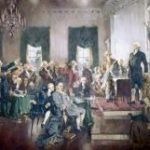This short video challenges the notion that the Constitution was a conservative reaction to the democratic ideals of the American Revolution. The Revolution generated constitutional discussion in the states, where legislators explored the nature of executive power, and other constitutional questions. In light of this constitutional innovation, Professor Jack Rakove maintains that the Constitution of 1787 was the culmination of—not a reaction to–the Revolution of the late 1770’s.
How Revolutionary Was the American Revolution?
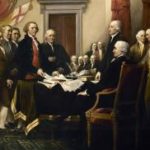
This short video asserts that although the American Revolution doesn’t fit the paradigm of other revolutions (e.g., British, French, Russian), it nevertheless resulted in a new form of republican government coupled with a new understanding of the role of citizens—both without turbulent social consequences. Professor Jack Rakove concludes that the hallmark of the American Revolution was the truly revolutionary idea that people could and should decide for themselves how to be governed.
Women & the American Story: Settler Colonialism and the American Revolution, 1692-1783
This free curriculum unit from the New-York Historical Society explores the active and engaged role that 18th century women played in colonial and revolutionary America. Materials consider how women experienced and were integral to settler colonial society, as well as the ways they participated in political discourses surrounding the American Revolution.
The American Revolution (CKHG Unit)
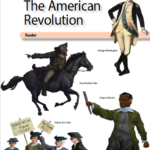
This unit begins by providing background information on the establishment of the thirteen colonies. Across 25 lessons, students learn about early alliances, the French and Indian War, and causes and provocations of the American Revolution. Students are introduced to major ideas in the Declaration of Independence and to key figures in the Revolution, as well as art and literature representative of the period.
Includes 25 lessons of roughly 45 minutes each.
Loyalists in the American Revolution
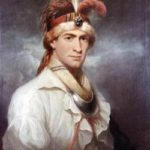
This short video clarifies the role played by Loyalists throughout the American Revolution. Never more than 1/5 of the population, Loyalists’ political and military significance varied both chronologically and geographically. Professor Jack Rakove highlights the efforts of British forces in the Southern colonies to enlist Loyalists in hopes of “pacifying” the countryside, but concludes that there were too few Loyalists for this strategy to succeed.
Women Before the American Revolution
This short video explores the limited rights of women prior to the American Revolution. According to the idea of femme covert, women were legally and politically subservient to their husbands. Married women could not own property and all women were considered irrelevant to the political sphere. Professor Rosemarie Zagarri notes that 80% of the freemen in the colonies could vote (as compared to 20% in Great Britain), but suffrage was still limited to men.
George Washington and the Revolution
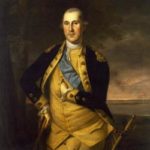
This short video examines the role played by George Washington in the defeat of the British during the American Revolution. From the moment he assumed command, Washington emphasized the importance of union to the war effort, in spite of challenges faced while commanding forces that were ill-fed, ill-supplied, and ill-served by the Confederation Congress. Professor W. B. Allen concludes that Washington’s leadership held both the military and the nation together during this tumultuous period.
Women During the American Revolution

This short video illustrates the degree to which women actively participated in the American Revolution. In response to the Stamp Act, American colonists agreed to stop importing British goods and the colonial women led the boycotts of tea, fine cloth, and other consumer goods. Women began to think of themselves as “Daughters of Liberty.” Professor Rosemarie Zagarri explains how male political leaders came to acknowledge the political capacity and potential of women during this era.
The Constitutional Convention: Reform or Revolution?
History is the chronicle of choices made by actors/agents/protagonists in specific contexts. This simulation places students at the opening of the Constitutional Convention and asks them to deliberate on the overarching question delegates faced at that moment: Should they propose alterations to the Articles of Confederation, or should they construct an entirely different plan that would supplant the Articles? By engaging with this momentous issue, students will understand the enormity of the “revolution in favor of government” that occurred in 1787.
Choosing to Make a Nation: Interactive Lessons on the Revolution, Constitution, and Bill of Rights
The Choosing to Make a Nation Curriculum Project developed by award-winning author Ray Raphael is a student-centered, primary source-rich approach to teaching about American history and our nation‘s founding documents. The lesson plans are based on the idea that history is the chronicle of choices made by actors/agents/protagonists in specific contexts. Students understand choices – they make them all the time. These lessons involve students by placing them in the shoes of historical people and asking: “What might you do in such instances?”
